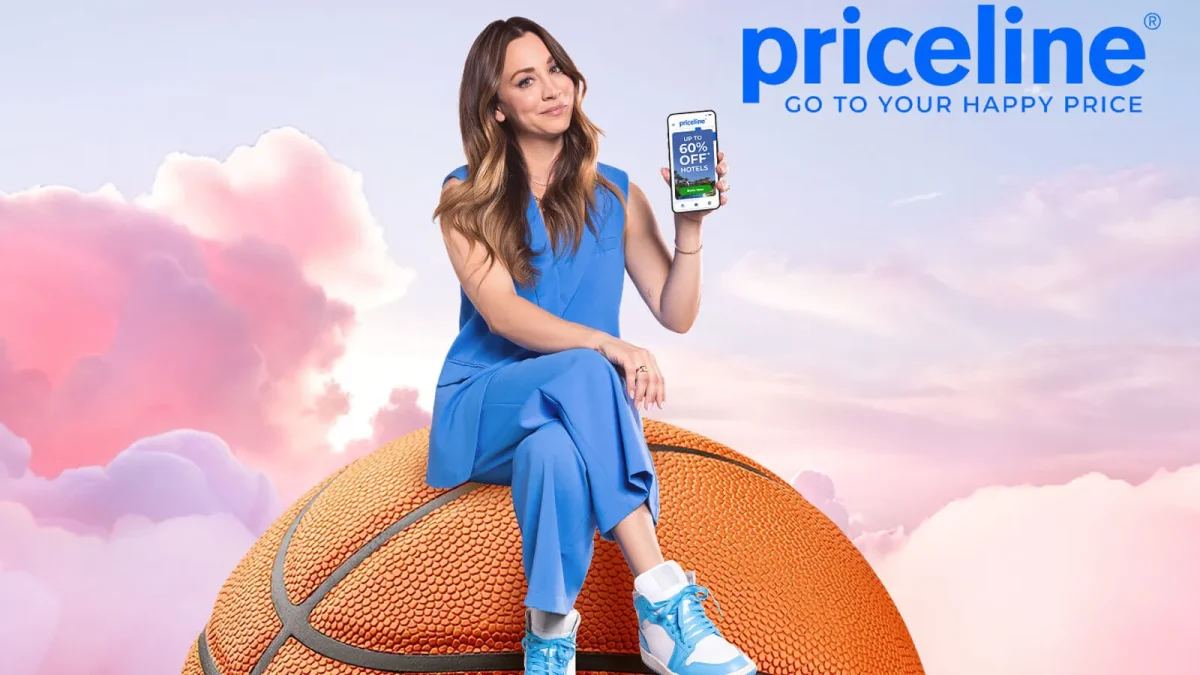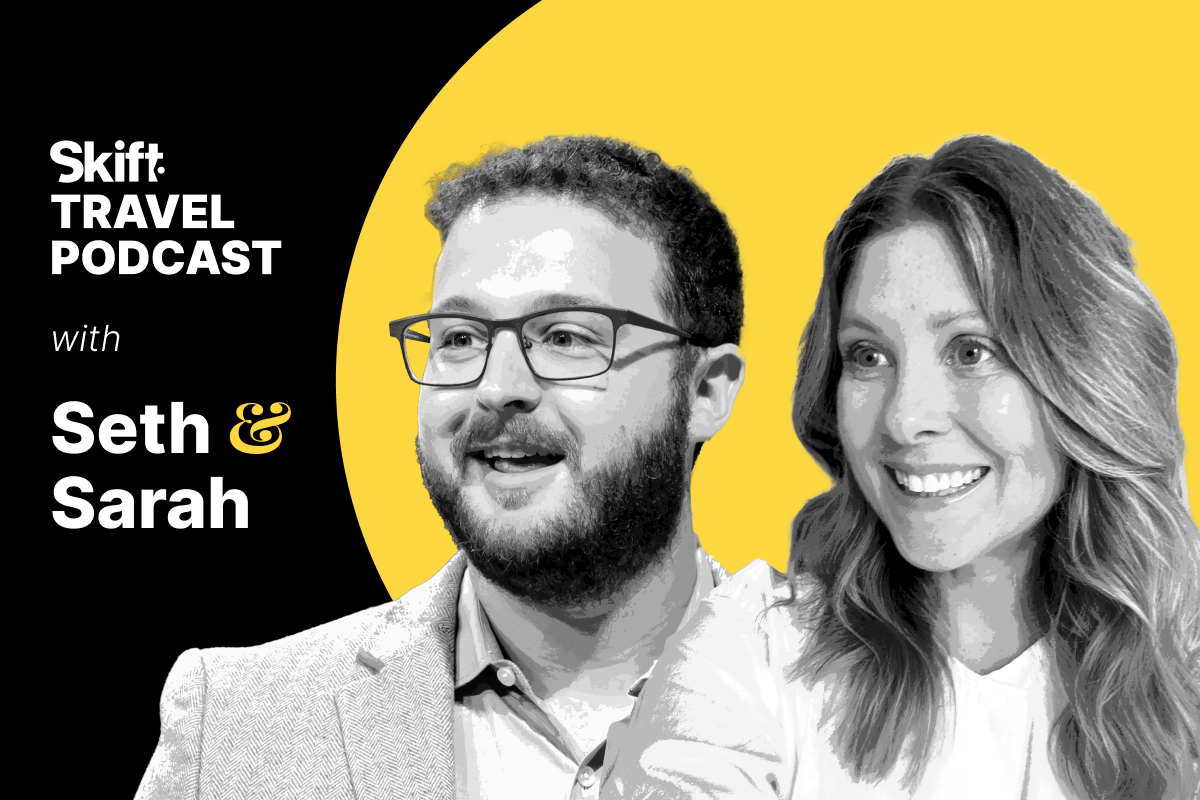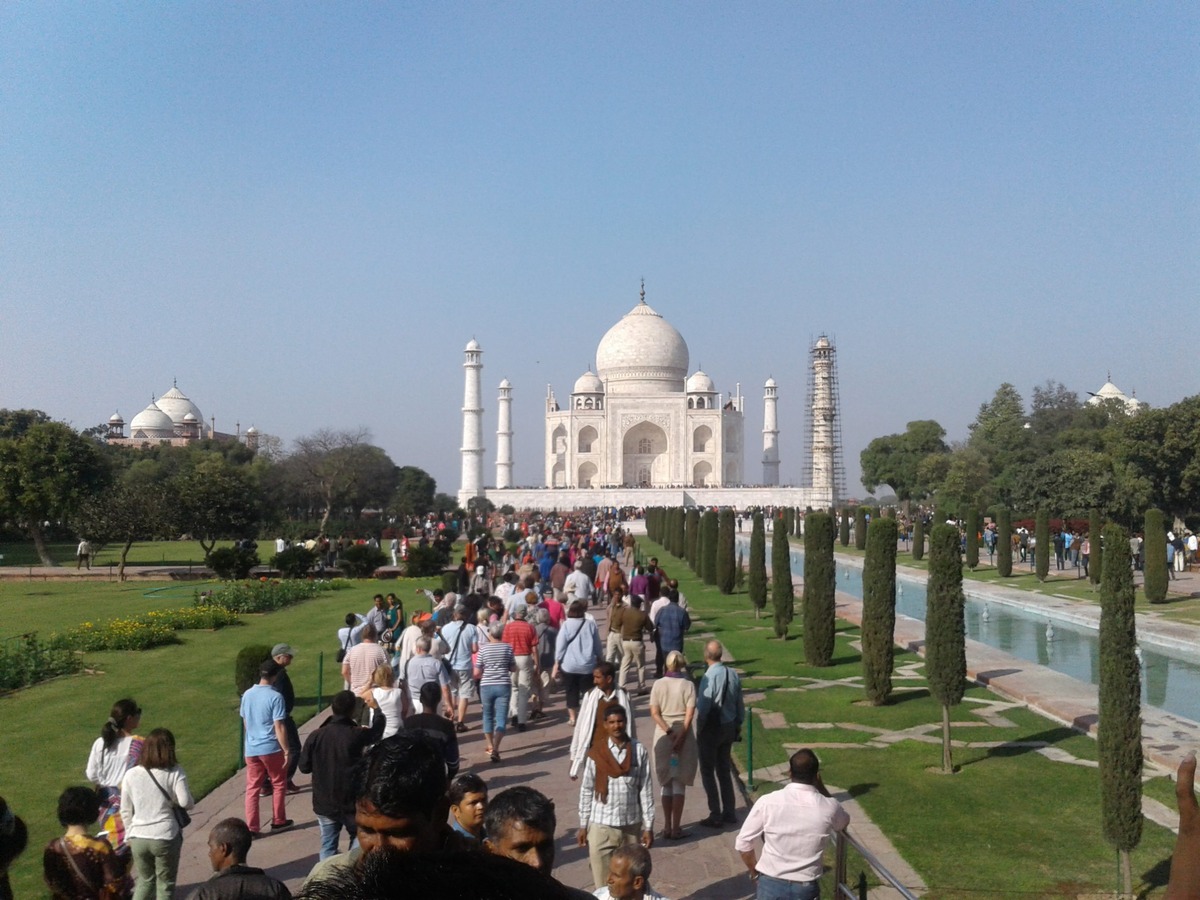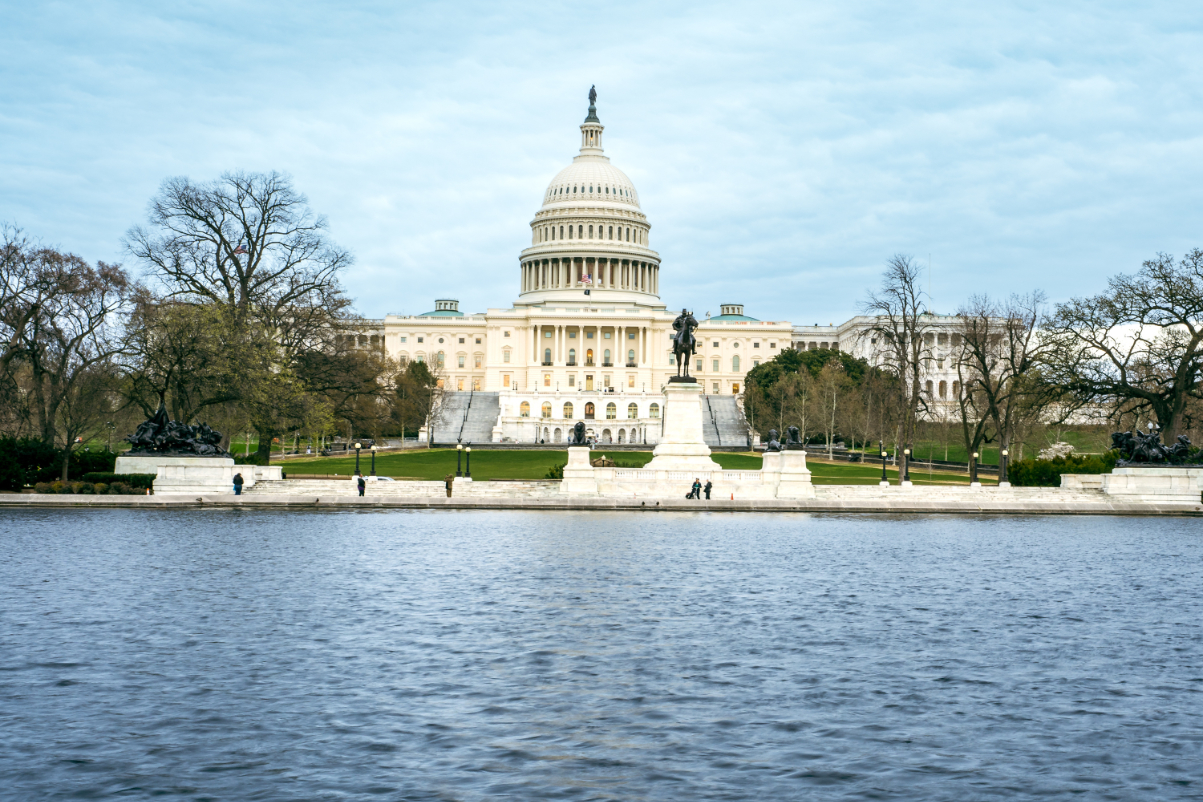Smart CMOs Are Seeing the Value of In-Person Brand Experiences and Events
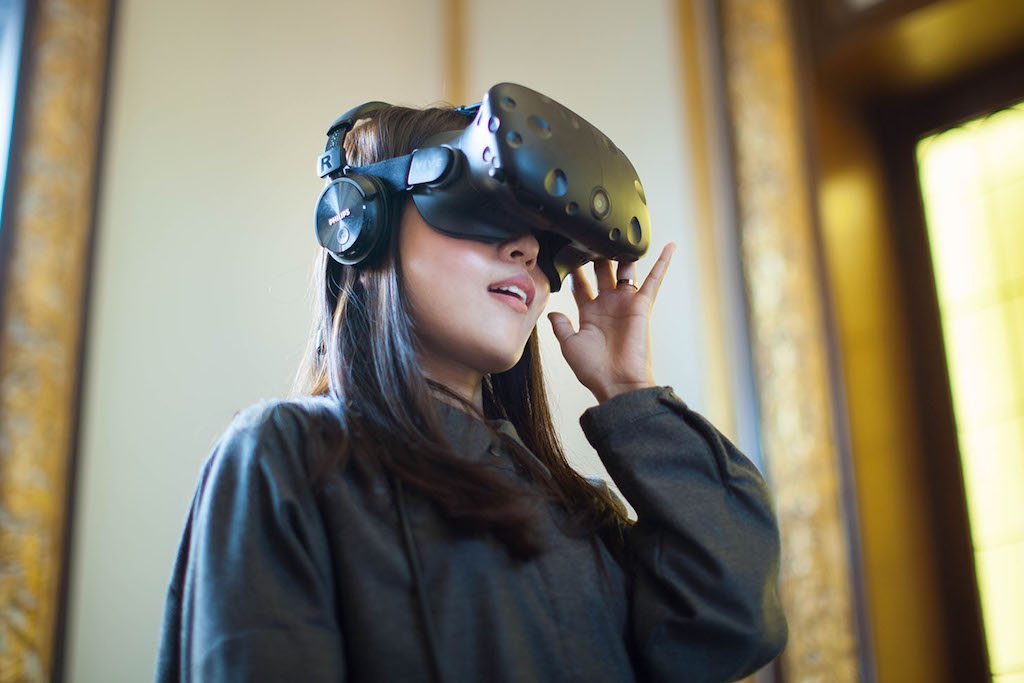
Skift Take
Today's chief marketing officers, brand managers, and event organizers are focusing more on in-person brand experiences to engage more with customers and clients to build loyalty, according to a new global study.
The survey of nearly 1,000 consumer-oriented and business-to-business marketing professionals in North America, Asia, and Western Europe was conducted by global meetings and events specialist Freeman along with SSI, a data solutions provider for market researchers.
According to the results of the survey, 59 percent of chief marketing officers recognize brand experience "for its ability to create ongoing relationships with key audiences." They also said they are spending more on live events, with more than one in three of these executives saying they expect to allocate 21 to 50 percent of their budgets to brand- experience marketing over the next three to five years.
"Marketers see brand experience, or live experience, as essential in the marketing mix [more so] than in the past," Chris Cavanaugh, executive vice president and CMO of Freeman told Skift.
He cited a recent Ad Age report that found brand experiences are No. 2 in terms of growth in marketing, behind digital.
"Our research says CMOs, through the meeting planners, are putting more emphasis on it," Cavanaugh said. "They see it as a way of building relationships with customers who are hard to reach. It allows them to break through the clutter. It allows them to sort of connect the brands and build relationships and all those things we sort of instinctually knew that live experiences do that other media don't do, but now the research bears that."
Mass Personalization
While marketers are realizing the increasing importance of organizing live events to engage customers and clients in brand experiences, Cavanaugh said the Freeman survey also found that there's opportunity for them to create more immersive experiences.
"Some of the research also showed that the more personalized the event or experience, the more effective it could be and that personalization was something that audiences were seeking out — integrating technology and data in order to make the real-life experiences more highly personable and immersive," Cavanaugh said. "And creating a show within a show, making sure that even if it's an 80,000-person event or a 20,000-person event, that my experience within the event was somehow curated, was a trend as well.
"So, personalization — mass personalization and technology — helped to create a personalized experience in a larger context of an event for sure."
Another growing events trend aimed at personalizing the experience is the "festivalization of meetings," something Cavanaugh described as the "merging of special events, entertainment, content, and learning."
"The three- to four-day experience is not just necessarily in a ballroom or an expo floor," he said. "[Planners] need to think about it holistically — that people want to be entertained, they want to be engaged, they want to learn, they want all those things. And those programs that are doing that and are integrative are definitely more successful."
Cavanaugh said two Freeman clients he's worked with — Marketo and the American Society of Hematology (ASH) — have successfully incorporated this type of event style into their respective meetings to grow their audiences and increase engagement.
"What we've done with ASH is we've brought second screen technology into their event, which has 30,000 attendees," he noted. "We managed about 3,000 pieces of content across all the sessions which allows us to sort of make them more interactive and the audience seemed to be responding to that and second-screen technology on their devices which means you're watching your presentation and interacting with it and behind the scenes we can see who's engaged in what type of content, when, and sort of change the content focus in the show."
With Marketo's recent Marketing Nation event for more than 6,500 attendees, Freeman's digital team developed an application for Amazon Echo so they could place the devices throughout the show to answer questions from attendees about where the sessions are, and how to get to the hotel, for example.
"It was this voice-activated, interactive way of getting people around the show basically," Cavanaugh said. "And answering questions about sessions and content and logistics and all the other things. It was our first time we've ever done it. I don't think anybody's ever done it before actually in the business, and it was highly engaging and they'll probably want us to continue the program."
In Asia, as well, business-to-consumer events are incorporating more interactive technologies, such as virtual reality, gamification, and location mapping. According to the survey, 42 percent of marketers in Asia are using some type of sensory interaction to personalize brand experiences, while only 28 percent of North American marketers and 13 percent of Western European marketers are doing so.
Thirty-one percent of Asian companies are also using virtual reality, compared to just 7 to 9 percent in other regions of the world.
"We work with Omega on these consumer activations around their products and we go to all their boutiques throughout China and create the sort of interactive, virtual, and real-life experiences," Cavanaugh said. "They're real-life experiences where you can see, touch, and feel the product, but then there are also VR experiences to sort of augment reality and take yourself further into those interactions."
A Disconnect Between Planners and the C-Suite
One surprising piece of data from the survey was that C-suite level executives seemed to see more value and were willing to spend more on brand experience than event planners.
"There was a bit of a disconnect in the research between the C-suite (more than 58 percent), which saw increasing value in brand experiences, and was expecting to spend more money in brand experience anywhere from 21 to 50 percent of their budget. They really want to strategize marketing, overall, around live experiences. But with the event- manager level folks, we didn't see as much; the percentages weren't as high (13 percent for brand managers and 18 percent for event planners).
He added, "I don't know if we have the answers to why, in effect, those that are defining the strategy see a higher value and a higher relevance in the future, than those actually delivering the programs. And I don't know if that's just because the program folks have their heads down so they have this very logistically complex, hard business mentality, or whether there's some sort of disconnect between the C-suite and the doers, if you will. But it is an opportunity to get everyone together around the common strategy."
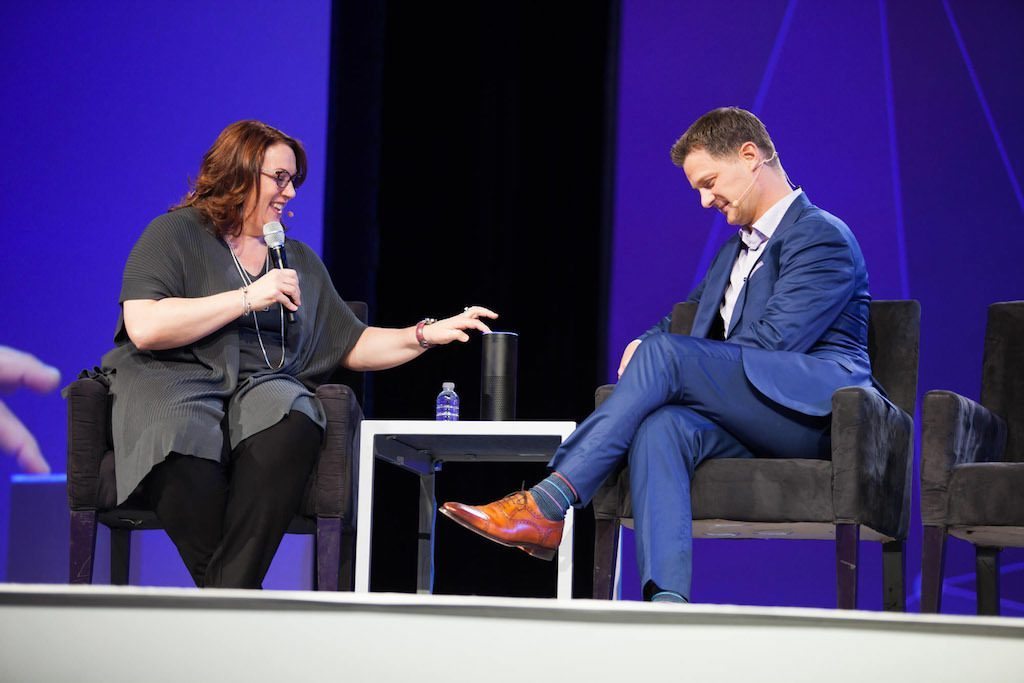
At Marketo's recent Marketing Nation event, attendees could ask strategically deployed Amazon Echo units questions about the event. Source: Freeman
What Makes a Successful Brand Experience or Live Event
Whether for a specific brand experience or any type of meeting or event, Cavanaugh said that the key to organizing a successful program is planning everything around the attendees.
"We're big advocates for putting the audience or the attendee at the center of the proposition, because the audiences are changing," he said. "It's harder to reach them, it's harder to engage them, and they are more sophisticated. Do audience segmentation first; don't treat everybody the same. Understand that you have different personas within your attendee base and look at them each independently. Do the research up front.
"Do the audience alignment up front, understand who they are, and which audiences you have, and how you want to move them, or which audiences you want to bring into the event that you may be missing. This is especially the case with younger audiences who may not opt in or may not have as much money to travel or do things. How do you get them into the funnel?"
After understanding the audience, planners should also be focused on content.
"People can get content online now, so you want people to continue to come to these live experiences and they do want to come, they do want to interact with each other. But they have to be able to get access content that you can't get anywhere else, right? And you need to publish things that can't be published anywhere else.
"You need to get content and thought leaders together like South By Southwest does — they're so popular, partly now, because of the content. It's just so darn good. And that's because they have thought leaders that come there, that you can't really see in other places, and they're very strict about the topics so that they're incredibly unique, and incredibly special. They're takes on marketing, communications and digital that you haven't gotten in other places, and that's sort of the secret sauce."

